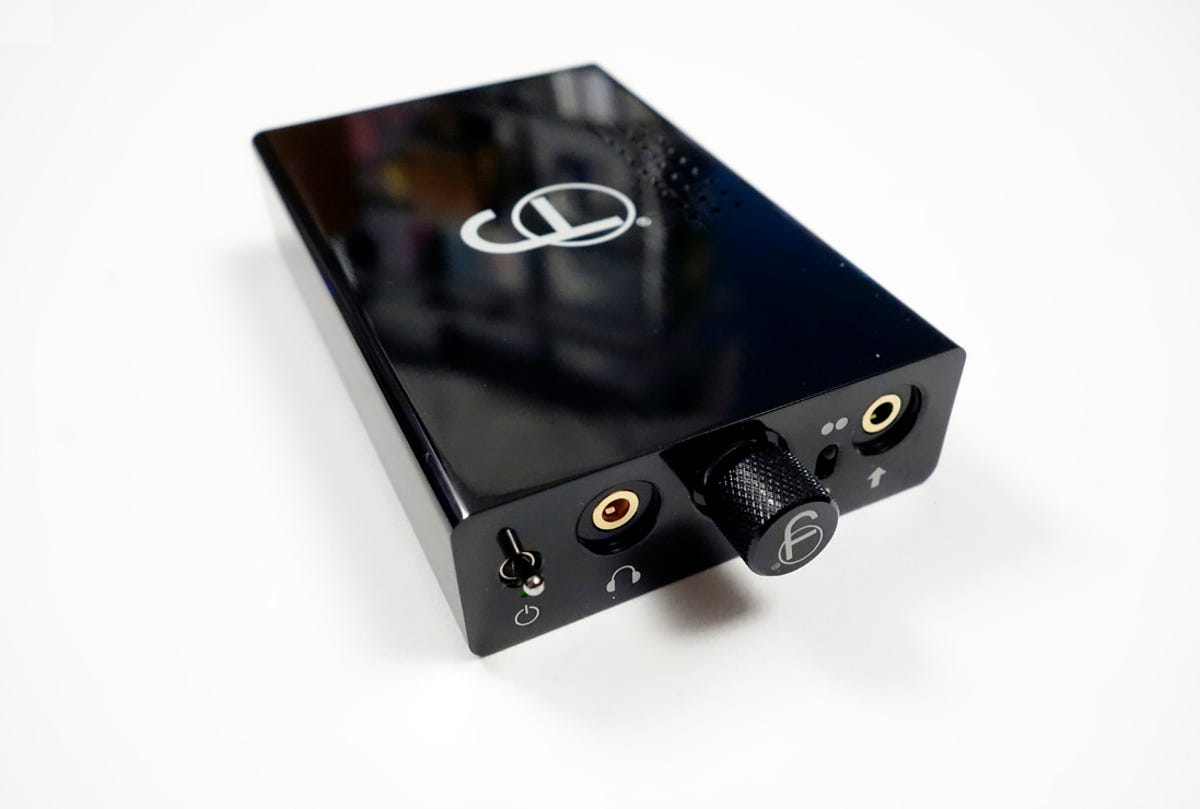
Steve Guttenberg/CNET
Cypher Labs AlgoRhythm Trio headphone amplifier delivers more fully developed tone, body, soul or whatever you want to call it to the sound of your headphones than what you’ve heard from your smartphone.
The chassis, machined from a single block of aluminum, is impeccably finished in high gloss black — the Trio is a handsome, understated beauty. The amp measures a compact 4.1 by 2.7 by 0.9 inches and weighs 8.6 ounces (244 grams).
I used a few headphones for the Trio evaluations, including a set of 1964 Ears V-6 custom molded in-ears, and Oppo PM-3 planar magnetic headphones. I also tested the Trio’s stamina with very high impedance (300-Ohm) Sennheiser HD 580 headphones that have made a lot of portable amps cry uncle, but the Trio took it in its stride.
The Trio is just an amplifier, not a music player or digital converter, so you need to use it with a source, like my portable Fiio X3 second-gen portable music player. The Trio was hooked up to the Fiio’s line-out jack, and at home on my desktop with my Schiit Modi 2 digital converter. The Trio’s connectivity is limited to a 3.5mm stereo input analog jack, and a 3.5mm headphone jack. Thanks to the amp’s low/high gain toggle switch, Trio can drive in-ear and full-size headphones.
The Micro-USB port on the rear panel is for battery charging only; an AC wall charger is included with the Trio. Maximum play time is 8 hours. A zippered carry case, USB charging cord and a half-meter mini-to-mini audio cable are packed with the Trio.
With the Trio your headphones will deliver more potent bass, airier highs and dynamics will kick harder than before. Trio uses a French made Thomson 6111 vacuum tube input and a FET transistor output stage. It runs slightly warm to the touch.


Steve Guttenberg/CNET
The Fiio X3 second-gen music player sounds awfully good on its own, but adding the Trio takes the sound to the next level so the headphones sound like better, more refined headphones. Stepping up to the soon-to-be-released Fiio X5 second-gen music player the sound only got better, demonstrating that the better the music source that’s hooked up to the Trio, the better it will sound.
The Trio’s vacuum tube imparts a sweetness that I like, but I admit this amp doesn’t supply the most accurate sound. That’s not the goal here, but the Trio isn’t soft or overly mellow, just ever so slightly richer than what you get from solid-state amps. Also, with very quiet music some background hiss or noise was audible, just barely, but it’s there. I wouldn’t blame the tube for the hiss; I’ve heard hiss from many solid-state headphone amps.
At $599 the price is steep, but if you’ve already invested in a high-end headphone, and you’re ready to take the sound to the next level, the Trio is worth considering. (Cypher Labs ships to the UK and Australia for an extra $39; the total $638 converts to around £410 or AU$825.)



